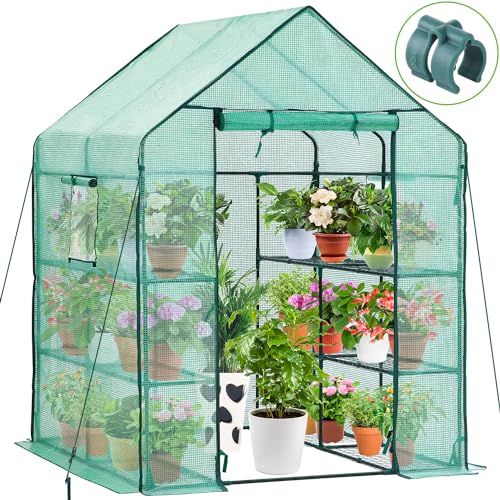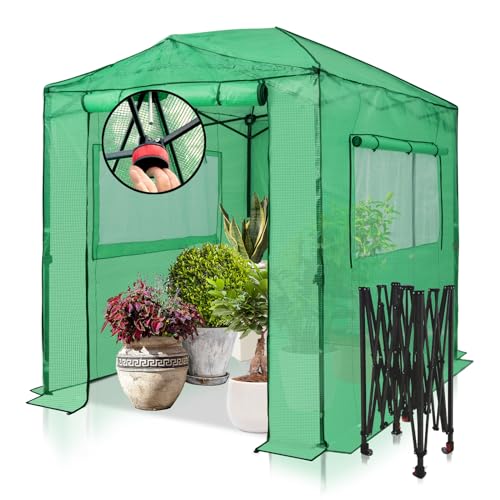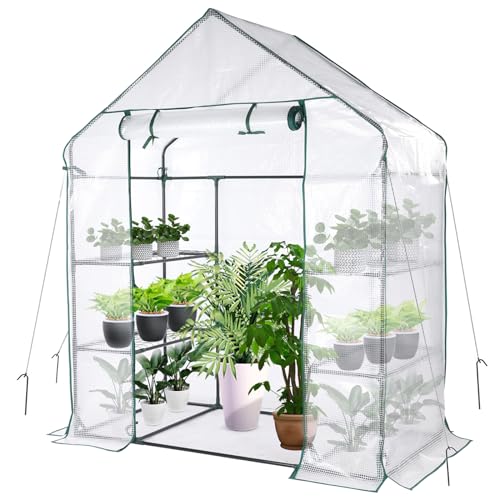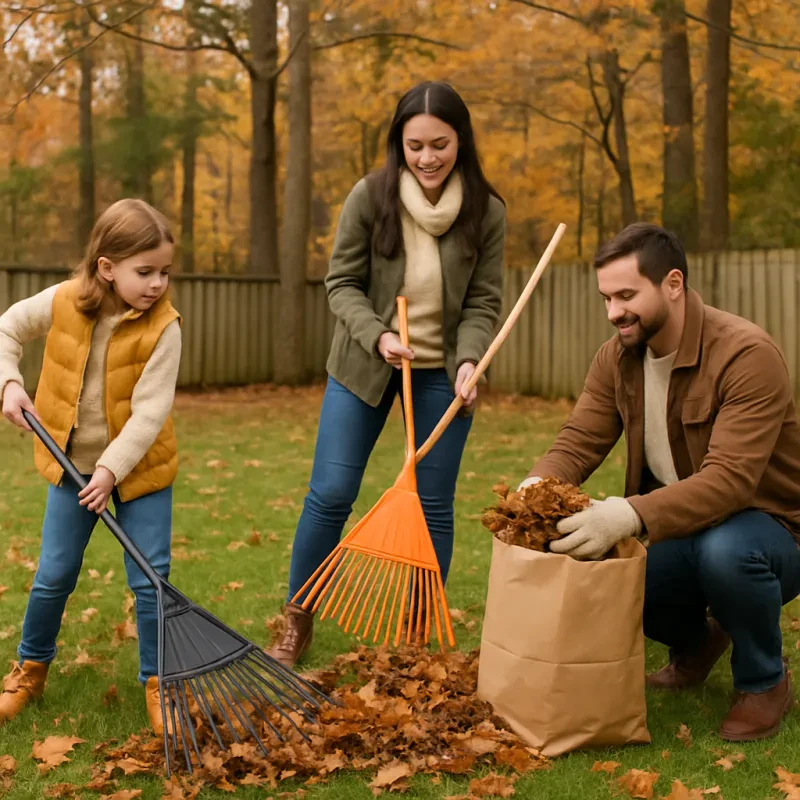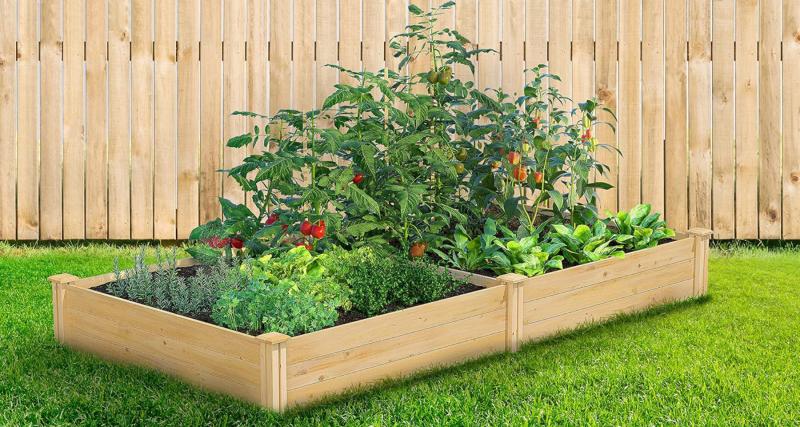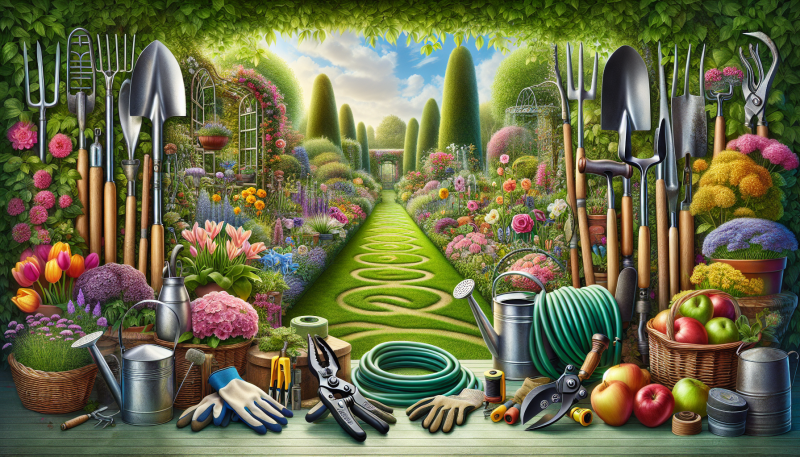Greenhouse Gardening – What You Need to Know
If you’ve been considering buying or building your own greenhouse to extend your gardening season, then do it. Growing plants in a greenhouse might seem a little daunting at first, but it’s pretty much the same as taking care of plants outside. The main difference is you’ll need to water your plants in a greenhouse since you not able to depend on the rain like you would with an outdoor garden. If you are concerned about bees being able to get in to pollinate your plants, don’t. They’ll find their way in through the ceiling vents and doorways.
Choose the Right Greenhouse
Greenhouses come in all shapes, sizes and prices, but ideally, you’ll want to buy the largest greenhouse you can afford. If you’re a traditionalist and have the funds available, you may want to go the old-fashioned glass greenhouse route for aesthetic reasons. If you don’t live in a neighborhood with strict Homeowners Association restrictions, building an unheated plastic greenhouse is a great option for the DIY types and budget conscious gardeners.
Start Seedlings in Your Greenhouse
You can get a jump start on growing garden plants before the temperatures start to warm up outside is just one of the many benefits of owning a greenhouse.
Cold hardy seeds like broccoli, cabbage, lettuce greens and Swiss chard can be started during the late winter months for an early spring harvest. You can begin tomatoes and peppers in early spring, and once the weather warms up, you’ll be able to move them out to the garden. Not only will your plants be bigger and better than anything you could buy at any home improvement store, but they’ll taste better, also, because they were grown with love by you.
Choose the Right Plants
One of the key factors in successful greenhouse gardening is choosing the right plants to cultivate in your space. With so many options available, it can be overwhelming to decide which plants will thrive in your particular environment. Consider the amount of sunlight your greenhouse receives, the temperature controls you have in place, and the level of humidity in the air. These factors will help you narrow down your choices and select plants that are well-suited for your greenhouse.
It's important to select plants that will not only survive, but also thrive in your greenhouse. Some popular choices for greenhouse cultivation include herbs such as basil, mint, and cilantro, as well as vegetables like tomatoes, cucumbers, and peppers. Flowers such as orchids, succulents, and begonias are also great options for greenhouse gardening. Take into consideration your own preferences and gardening goals when choosing which plants to grow in your greenhouse.
In addition to considering the environmental factors in your greenhouse, it's also important to think about the space limitations you may have. Some plants, such as vine crops or trees, may require a great deal of room to grow and may not be suitable for a smaller greenhouse. Consider the size and layout of your greenhouse when selecting plants, ensuring that they have enough space to spread out and grow to their full potential. By carefully selecting the right plants for your greenhouse, you can create a thriving and beautiful indoor garden that will bring you joy for years to come.
Maintaining Optimal Temperature and Humidity Levels
Temperature control is crucial in a greenhouse. Most plants prefer temperatures between 70-75 degrees Fahrenheit during the day and slightly cooler at night. Use a thermometer to monitor the temperature and make adjustments as needed. Consider using heaters or fans to regulate the temperature and ensure it stays within the ideal range.
In addition to temperature, humidity levels play a vital role in plant growth. Most plants thrive in humidity levels between 50-70%. To maintain proper humidity, consider using a humidifier or misting system. Be sure to also provide adequate ventilation to prevent excess humidity, which can lead to mold and mildew growth.
Proper Watering and Fertilizing Techniques
It is crucial to provide your plants with the right amount of water to ensure they thrive and grow to their full potential.
Overwatering can lead to root rot, while underwatering can cause wilting and stunted growth.
To determine when to water your plants, check the soil moisture level by inserting your finger into the soil.
If it feels dry to the touch, it's time to water.
Be sure to water the plants at the base to avoid getting the leaves wet, which can lead to fungal diseases.
When it comes to fertilizing, it's important to feed your plants with the right nutrients to promote healthy growth.
Choose a balanced fertilizer that provides a mix of nitrogen, phosphorus, and potassium.
Follow the instructions on the fertilizer package for the correct dosage and frequency of application.
Preventing Pests and Diseases in Your Greenhouse
One of the key aspects of successful greenhouse gardening is preventing pests and diseases from wreaking havoc on your plants. One effective way to keep these unwanted visitors at bay is to practice good hygiene in your greenhouse. This means regularly cleaning and disinfecting your tools, pots, and surfaces to prevent the spread of harmful bacteria and fungi.
Another important tip is to inspect your plants regularly for any signs of pests or diseases. Look out for yellowing leaves, spots, or unusual growths that may indicate a problem. If you do spot any issues, act quickly to quarantine the affected plants and treat them with appropriate solutions to prevent the problem from spreading.
Additionally, creating a healthy environment for your plants can help prevent pests and diseases from taking hold. Make sure your greenhouse is well-ventilated to prevent stagnant air, and monitor the humidity levels to ensure they are at optimal levels for your plants. Proper watering and fertilizing practices can also help strengthen your plants' natural defenses against pests and diseases.
Greenhouse Maintenance
The great thing about cleaning a greenhouse is there is no need for fancy chemicals. You’d be surprised how quickly tree pollen, algae and fungus can build up on both your interior and exterior window panes. Simply clean your greenhouse at least once or twice a year with a scrub brush and hot soapy water. Greenhouse cleaning time is also the perfect opportunity to clean out all your greenhouse pots and trays as well, especially if you plan on gardening during the winter months when you need to maximize the light shining into your greenhouse.

